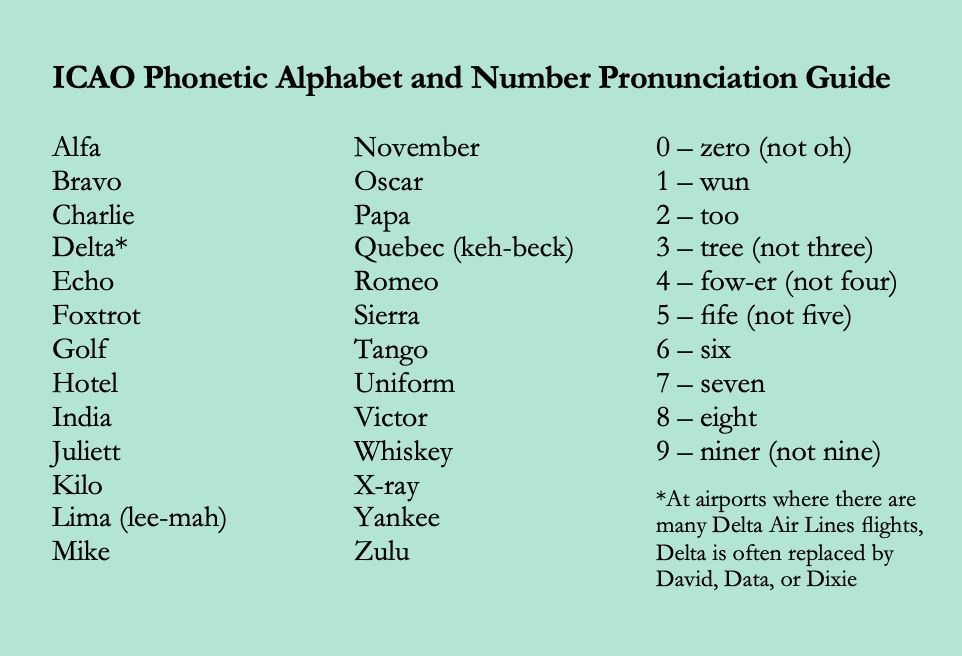8 HOW-TOs for New-Hire Airline Pilot Training – Part 1
How to get through your first new-hire airline pilot training course

Congratulations on landing your first airline or jet pilot job!
Good news: If you make it through your first new-hire airline pilot or jet training course successfully, you and the airlines know that you’re trainable, and worth the investment of hiring.
Bad news: A new pilot job isn’t real until you’re sitting at the controls, getting paid to fly the actual aircraft on a revenue flight. And you are embarking on the hardest training of your entire flying career in order to get there.
What follows is a comprehensive list of HOW-TOs for getting through this training successfully. But first, here are . . .
The Top 5 Tactics to Torpedo Your Training
1. Brag that you know everything already, so you don’t need to study.
2. Talk trash about the airline’s diversity initiatives and the female and BIPOC pilots in class.
3. Clip your toenails during class. (True story! And the guy who did this, did not make it through training.)
4. Prioritize fun or family time over dedication to passing this training program.
5. Blame the instructors, training program, and airline for your poor performance.
Here’s how to get through your training successfully:
#1 HOW TO PREPARE
- Stop using CBD products immediately. These legal, over-the-counter products shouldn’t have enough THC to make you bust a pre-employment drug test, yet sometimes they do, and the DOT is advising all workers subject to drug testing to avoid CBD products. You don’t want your airline career to end before it even begins.
- Get your official documents in order, and ensure none will expire in the next few months: logbooks, pilot certificates, FAA medical,passport, driver’s license.
- Follow the airline’s dress code: Bring business casual attire, which means slacks, collared shirt or blouse, and closed-toe shoes. The simulators are kept cold, so carry a sweater or light jacket. Include one nice suit or outfit for the class photo.
- Prepare and refine your skills beforehand: Get in an airplane or simulator and get your instrument scan going. Fly raw data ILS approaches at the highest speed possible. Fly that simulator at speed times two or times three. This will help prepare you for flying a regional airline jet with an approach speed of up to 135 knots. As the Director of Training for a regional airline told me, "I can teach someone how to fly our jets; I don't have time to teach them how to fly on instruments."
- Clear your schedule: Get as many home projects completed beforehand, so they will not be a distraction while you are in training: Tax preparation, holiday gift shopping, yard care, etc.
- Prepare your family: Tell your spouse, children, extended family, and friends you will not be available for any family functions – no birthdays, weddings, holidays, and no crises, no drama. Ask them to give you their unwavering support, and let them know you won’t be able to reciprocate until after all training is completed. They should essentially leave you alone and not bother you with any issues, with the exception being the death of a close family member. I am partly kidding . . . Actually, I am not kidding.
- Focus! For the entire 4 to 8 weeks of training, make getting through this training program successfully your first and only priority. The pilots I’ve watched drop out or get washed out of training often didn’t focus on studying, took day trips boating with their spouse, regularly met up with friends for beers, spent their days off commuting back and forth from home, or had distracting family issues.
- Enlist a cheerleader, a friend who will send supportive and inspirational messages, maybe even sending care packages to your hotel.
#2 HOW TO TAKE CARE OF YOURSELF
- Make a plan to take care of your physical and mental health, your nutrition, exercise, and sleep, for the entire time you will be in training.
- Eat healthy food: If your hotel room is equipped with a fridge and a microwave, go to the grocery store and stock up on quick-cooking foods. Download food delivery apps and set up your accounts in advance. Strive to choose healthier options over fast food.
- Bring healthy snacks to sim sessions: Your sim training days might look like this: 2-hour briefing, 4-hour sim session, 30-minute debriefing. That’s over six hours of intense training with breaks just long enough to hit the bathroom and the vending machines. Bring your own healthy snacks such as a piece of fruit, baggies of mixed nuts, a power bar, a bottle of water.
- Release stress with physical movement. Go running or walking. If you can’t get outside, use the hotel gym, run in place on your bed, or climb up and down the stairways of your hotel. Use a resistance band or jump-rope. Practice yoga and stretching. More ideas on how to de-stress are in this article.
- Get a good night’s rest . Put out the Do Not Disturb sign and lock and bolt your hotel room door. Make sure the window curtains are shut tight — clip them closed with the clips from a clothes hanger. Take a hot bath or shower before bed. Try foam earplugs. Set two alarms on your phone so you won’t worry about oversleeping.
- Take regular breaks. Go outside and get some fresh air. At least once a week, rest your brain by taking time away from the classroom, from the computer, and away from studying altogether. Read a silly novel or throwaway magazine. Watch a comedy movie. Explore local sights. Go home to see your family – but not if the stress of commuting and chores outweighs the benefits.
#3 HOW TO UNDERSTAND FAA-APPROVED MANUALS AND CHECKLISTS
You’ve studied and referred to the FAR/AIM throughout your pilot career so far. Now you can use that book as a doorstop. Going forward, you will refer to the manuals listed below, which may go by different names, and may be on paper or on an Electronic Flight Bag device, but generally follow this format. Put together, these manuals are your new employer’s FAA-approved policies and procedures, which adhere to FARs and Operations Specifications and are tailored to its particular flight operations.
- Company Operations Manual or Flight Operations Manual: Various names for the one manual with the policies and rules of operation specific to your airline. It includes the FARs, Operations Specifications (FAA approval for very specific operations, such as Cat II and Cat III approaches), company organizational chart (chief pilots and training managers up to president), general rules of conduct, responsibilities of crewmembers, company operational policies and procedures, handling of passengers and cargo, and general procedures for normal and emergency/irregular operations. When you’re upgrading to captain, this is your “Bible”.
- Aircraft Operating Manual or Flight Handbook: Contains aircraft-specific limitations, standard operating procedures, flight profiles and callouts, and supplementary procedures such as cold weather operation procedures, battery-start procedures. There is guidance and policy on crew duties for Captain and First Officer, and for Pilot Flying and Pilot Non-Flying (or Pilot Monitoring), and for use of automation and checklists. There are profiles, step-by-step guidance for how to set up the FMS and flight guidance panel, configure the aircraft, and fly all types of approaches, including ILS and RNAV/GPS approaches, missed approaches, and flight maneuvers such as engine failure at V1 and the windshear escape maneuver. This manual is your primary training resource, and you will refer to it frequently in line flying.
- Aircraft Systems Manual: Contains systems information for your aircraft, including descriptions, cockpit diagrams, and schematics of each system such as electrical, fuel, hydraulic, pressurization, etc. This manual is more useful during training than in line flying.
- Normal Checklists: Used for each phase of flight such as before engine start, taxi, before takeoff, climb, cruise, etc. Usually the aircraft is configured first, in a sequence of actions called a “flow”, and then the checklist is called for and run through to confirm that the aircraft is configured correctly. Most normal checklists are read aloud in Challenge and Response format: The First Officer or Pilot Not Flying (or Pilot Monitoring) reads each item (challenges), and the Captain or Pilot Flying responds to each item. The checklist item and the response must be stated exactly as written on the checklist – VERBATIM! –and this is what the other crewmember, instructor, check airman, FAA, and cockpit voice recorder are expecting to hear.
- Quick Reference Handbook: The QRH has checklists and procedures for abnormal and emergency situations and malfunction of aircraft systems. Some malfunctions are serious enough to require a time-critical response and therefore require memorization of the first few steps, such as engine fire, rapid depressurization, stabilizer trim runaway. These must-know checklist steps may be called “memory items”, “boxed items”, “recall items”, or “boldface items”, and must be memorized as precise actions in a specific order. Some airlines now have a Quick Reference Card to take the place of memory items. The Captain (or new-hire trainee acting as Captain) will designate who will fly the airplane (usually the PF) and who will fix the problem (usually the PNF), identify the problem, determine the correct checklist to use, and call for memory items to be completed, if applicable. The PF will focus primarily on flying the airplane. The PNF will complete the entire checklist in a Challenge – Do – Response format, to contain the failure and configure for the remainder of the flight. Critical or irreversible actions such as shutting down an engine in flight require confirmation by both pilots.
- Minimum Equipment List / Configuration Deviation List: The MEL/CDL defines the aircraft systems, indicators, and equipment that “may” be inoperative or missing and for which maintenance “may” be deferred to later when certain criteria are met. Examples: inop APU, low crew oxygen level, missing static discharge wick, broken passenger tray table. When you’re upgrading to captain, you must know your MEL and deferral procedures.
- Performance Manual, Loading, Deicing, Fueling Manuals: These may be separate manuals, or the procedures may be incorporated into one of the other manuals listed above. You will be spending quite a bit of time learning the loading and performance calculation procedures for your aircraft.
#4 HOW TO STUDY
- Major areas of study: Aircraft Systems, Performance, Limitations, Memory Items, Profiles, Flows, Callouts, Checklists, Standard OperatingProcedures.
- Know how you learn: Do you best absorb information aurally, visually, or through tactile sensation? Some people learn best in the classroom or lecture hall, some learn by reading the textbook or manual, some learn by hands-on practice in the lab (simulator or airplane). For most people, it is a combination of these. Computer Based Training is becoming more prevalent, to standardize training and make it more cost-efficient, and even if that doesn’t work best for you, we’re stuck with it. Know yourself and seek out additional ways to absorb theinformation in the most efficient way for you.
- Rote memorization: There are some basic facts and figures that you must have down cold and be able to recite verbatim, and this includes Limitations, Memory Items, and Callouts. It can help to begin learning them by rote even before you fully understand their significance. Start early!
- Cooperate and graduate: Everyone in your new-hire trainingclass has already made it through the application and interview gauntlet to get hired. You are not competing with each other, so do not hoard information, do not flaunt your knowledge and abilities, do not refuse their requests for help. Share the “gouge”. Having said that, keep healthy boundaries, if helping others is taking up too much of your time or mental energy.
- Study group: It can be very helpful to be in a study group with other new-hires. Choose your study partners carefully — get with the smart, serious students. Keep your study group to 3-5 people at most; bigger than that, and one person will invariably not keep pace and drag you all down. When you’re able to explain something to someone else, you really “get it”. Draw out schematics and diagrams, to reinforce your understanding of each aircraft system. Prep for the oral exam and checkride by challenging each other in a Q & A format.
- Study buddy or training partner : You will be matched with a training partner for simulator sessions, either another new-hire pilot or a company pilot upgrading to captain. Once you know who your simulator training partner is, try to meet up to study and practice together. Or practice with a study buddy or on your own: Flows, Profiles, Checklists, and Callouts, exchanging Pilot Flying and Pilot Not Flying (Pilot Monitoring) duties. Practice for all normal procedures, every phase of flight, every type of approach.
CONTINUED IN PART 2 -- CLICK HERE FOR HOW-TOs #5 - 8
© 2021 Jenny Beatty. All Rights Reserved.
Photo credit: Embraer S.A.









